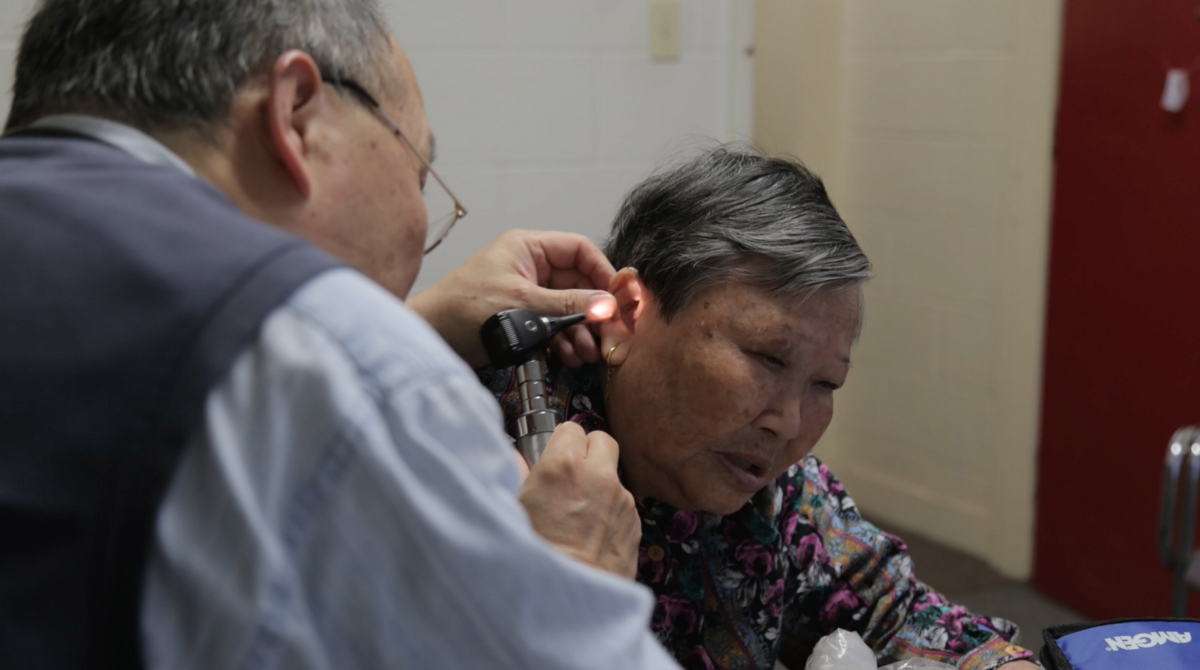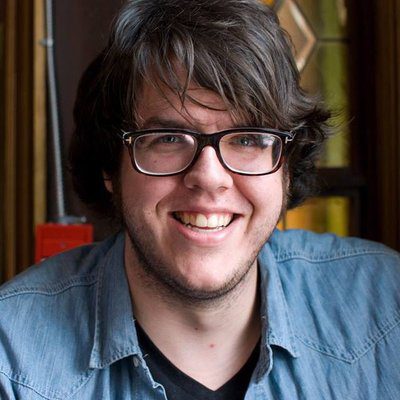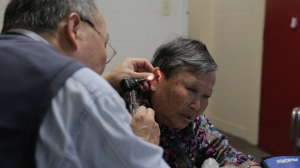
Can a magazine solve Toronto’s public health problems? Tai Huynh is doing his best to find out.
“I’m interested in making change,” Huynh, the 41-year-old creative director of OpenLab says over the phone in January. “And storytelling is a part of that.”
OpenLab, a design incubator housed in the Toronto General Hospital, exists to fulfill a clear mandate, albeit one which requires immense creative energy and patience: improving Ontario’s healthcare system. A member of the University Health Network, OpenLab consists of three collaborative labs, which work on 15 to 20 projects at once. In the Complex Care Lab, academics, along with clinical and design professionals, research innovative home-care methods, analyze data to predict healthcare system usage, and develop an app to assist clinician’s patient-specific management plans. The Experience Lab studies alternative retirement community models, runs an urban farm, and devises patient-generated solutions to common health-care issues.
But in the ambiguously titled X Lab—where technology, health and multimedia collide—OpenLab runs an online magazine, theLocal.to. Journalism may seem like a strange public health strategy, but when explained by Huynh, who also serves as The Local’s editor, the rationale begins to make sense.
From 2003 to 2011, Huynh was the “director of excellent care for all strategy” for Ontario’s Ministry of Health, writing legislation, designing policy and funding programs which fulfilled a promise of delivering improvements to the province’s healthcare industry. While at the ministry, he had a direct sightline into how change was implemented, so when he arrived at OpenLab in 2011, Huynh understood which systems were working and which needed tinkering.
Many people view healthcare as only consisting of medicine, hospitals, doctors and nurses, but to Huynh, it’s deeper than that. It’s about social determinants like age, gender, income, social services, housing, food availability, transportation, education and virtually everything else.
Since starting in January 2017, The Local has examined various public health issues, including pregnancy through the lens of poverty, addiction through the lens of homelessness, and what happens when a community loses its only grocery store. The frequency of the published content is low, but the stories The Local produces are often unlike those seen in mainstream health reporting in both scope and specificity.
The Local’s team—which consists of Huynh, managing editor Jen Recknagel and Nick Hune-Brown, a prolific freelancer and the site’s features editor—chooses its areas of focus carefully. Rather than report within the confines of a daily news cycle, the staff pores over neighbourhood demographics, community health profiles, and data compiled by the Toronto Central Local Health Integration Network (LHIN), the organization which funds the publication. In Ontario there are 14 LHINs, not-for-profit crown agencies involved in delivering local health services.
“We have a lot of [health] statistics put together by the city, but a lot of these data are just data points,” Huynh says. “They tell you a little bit about what’s going on in the community, but we want to do more than that. We want to go into these neighbourhoods, and from that one data point, uncover deeper, more complex issues.”
The central LHIN covers a region of roughly 1.3 million residents in 72 Toronto neighbourhoods with distinct healthcare concerns. Stephanie Lockert, the central LHIN’s senior policy advisor and director of strategy and planning, says the central LHIN’s mandate is to plan localized healthcare solutions. The Local fit that objective.
“We’ve been looking at a lot of population health data and [are] trying to understand which communities might need different services, more services, and where we can provide different care,” says Lockert.
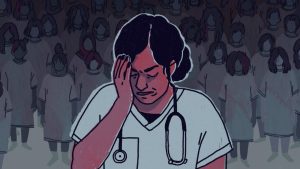
For example, as Vanessa Milne wrote for The Local in January, Englemount-Lawrence, a northwestern Toronto neighbourhood, has higher birth rates than the rest of the city. And while the city-wide average of families led by single mothers is 18 per cent, in Englemount-Lawrence, that figure jumps to 25 per cent. Of the 72 neighbourhoods in the central LHIN, Englemount-Lawrence has the second-highest rate of prenatal hospitalization.
Milne found that income often had a direct influence on prenatal and neonatal health. She cited a 2012 study which found 10 per cent of new mothers with annual household incomes of less than $20,000 faced multiple health problems, “while only about half a percent of women in households making more than $80,000 did.”
Milne wrote about Sam, a Filipino immigrant who had an ectopic pregnancy in 2015 and stillborn child 36 weeks into her second pregnancy. Sam and her husband make about $24,000 per year, but can’t afford to live in their own apartment. Instead, they live with the elderly man for whom she works as a caregiver. The Local’s motto is that there are no stories without data, and no data without stories. Sam was more than just a data point, and she lived in what Recknagel refers to as a “pocket of inequity,” where her story is much more common than it should be.
“We try to ask what life is like for people who live that data,” says Recknagel, a former documentary producer with a master’s degree in strategic foresight and innovation from the Ontario College of Art and Design, and a degree in new media studies from Ryerson University.
Hune-Brown had been a full-time freelancer for 12 years before joining The Local, but the type of work Huynh and Recknagel hoped to do convinced him to take on the gig.“They had a desire to tell longform stories in a subject area that I think people could really use,” he says.
Hune-Brown has used his connections to wrangle up some of the city’s more established writers, including Katherine Laidlaw and Walrus digital editor Lauren McKeon, as well as up-and-comers, to produce The Local’s stories. Huynh and Recknagel have written several features as well.
Stories like Sam’s are what Huynh and Recknagel envisioned their project would tackle. It’s not that mainstream health reporters don’t care about these issues, but they may not have the time or data access necessary to produce features about them on a consistent basis while responding to daily news. Moreover, their work isn’t paid for by an organization with a mandate to directly improve healthcare.
In 2017, the central LHIN provided OpenLab with $150,000 to fund The Local, and that money covers all production costs as well as freelancer fees and editor payment. Lockert, who worked with Huynh at the Ministry of Health, has a master’s degree in public health, and sees The Local as an opportunity to bring the concerns of community members directly to policy-makers.
“It’s not always possible for them to come meet with us. With The Local, we can go to them,” said Megan Primeau, the central LHIN’s communications manager.
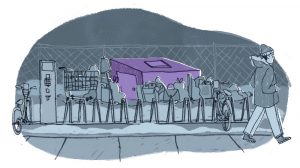
Huynh has a bachelor’s degree in science from the University of Toronto, a master’s of business administration from York University, and a master’s in design from the Ontario College of Art and Design, a resumé which gives him a multidisciplinary perspective on how the world works.
When Huynh was nine years old, his family moved from Ho Chi Minh City, in Vietnam, to Scarborough, where they lived in the Chester Le neighbourhood, a sprawling public housing area. His family didn’t speak English and lived well below the poverty line when they arrived. His mother was a seamstress, and his father was a factory worker.
The neighbourhood was demographically, culturally and ethnically diverse, Huynh remembers, with a lot of newcomers from South Asia and the Middle East. Its residents were good people, he says, but like many public housing complexes, it faced its fair share of issues, including gun violence.
Given his education and career in healthcare, Huynh now sees myriad ways in which the communities we live in affect our well-being. Sometimes, he wishes Chester Le was in one of the 72 neighbourhoods The Local covers so the team could analyze its unique public health scenario, and he hopes the publication might someday expand its reach.
Although funding for the 2018 fiscal year has yet to be approved by the central LHIN, Lockert says the organization is pleased with The Local and is interested in continuing their partnership. In the future, similar projects could start in other integration networks reaching different corners of Toronto.
“To design anything well, you first need to understand the needs of the people who are going to use it,” Huynh says. “To truly understand that, you must start to spend time with those communities.”
And Huynh doesn’t plan on stopping anytime soon.
About the author
Managing Print Editor, Ryerson Review of Journalism
